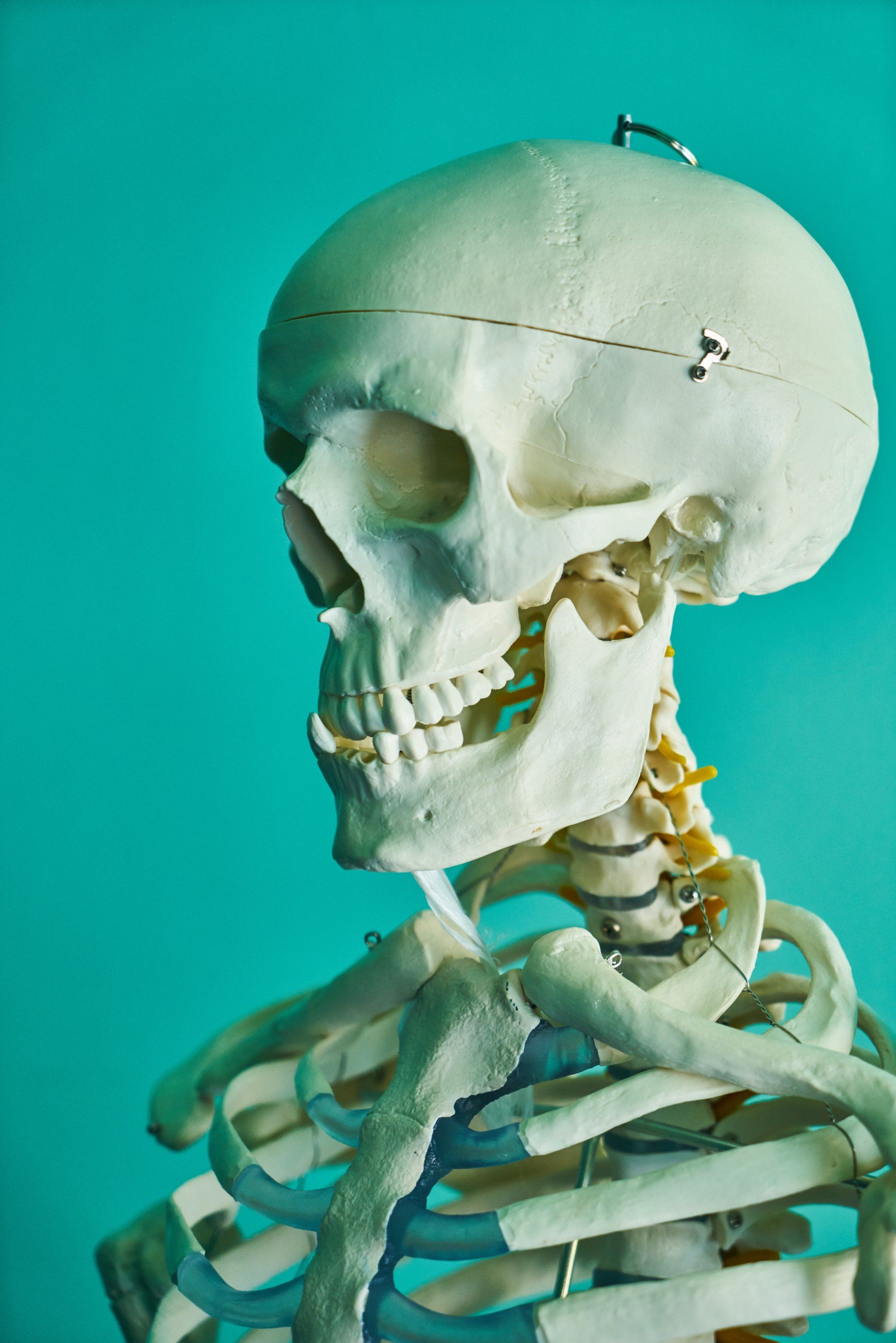How the TMJ and pelvis are connected

The jaw, or specifically the temperomandibular joint (TMJ)
is a key area in the body and by working over this area, therapists can affect
other areas of the body. Read on to find out why...
What is the TMJ?
The temperomandibular joint is the sliding hinge that connects the jaw to the skull – you can find it by placing your fingers in front of your tragus (the small pointed part of your ear that sticks out, in front of the entrance to the ear canal) – as you open and close your mouth you will feel your TMJ move.
How do you know if you have a TMJ disorder? You may feel your jaw clicking or popping when you chew, you may grind your teeth, there might be pain in the joint or you may have headaches or even tinnitus.
What causes it?
It could be a previous injury, such as a blow to the side of the head or jaw. It could also be from a neck injury such as whiplash. It may even be a result of the way you were born, such as an assisted birth (forceps or ventouse) or even a caesarean. Stress can also be a major cause – the centre for stress is in the pituitary gland in the brain, and lies inside the sphenoid bone. This bone is influenced by the pterygoid muscle, which is on outside of the jaw, and in this way stress can cause a tight jaw.
TMJ misalignment can affect alignment throughout the body, and vice versa. When our bodies are out of balance, through physical injury, repetitive movement, poor posture, or even stress, the body compensates by making other muscles more dominant. This then creates a holding pattern – the misalignment is maintained as a way of enabling the body to function, but it can lead to pain and injury.
Things you can do to help yourself:
Avoid chewing gum. Also try not to bite hard objects such as pens, pencils or fingernails
Avoid resting your chin on your hands, or on one hand
Avoid chewing on just one side
Avoid clenching or grinding your teeth – some people do this subconsciously or in their sleep, and it may be a stress related response
Try to relax – use a simple belly breathing technique – see my article here.
How does TMJ affect the pelvis?
From conception our mouth and pelvis area are connected – as the embryo develops from a simple ball of cells, two dimples appear on either side, one becoming the mouth and the other becoming the openings for the urinary, reproductive and digestive tracts. The spine then grows between them, but the two ends remain connected.
Another connection is that of the fascia. The fascia is a connective tissue present throughout our body, wrapping around our muscles and internal organs. It is the fascia that we are working with in Bowen. There are fascial lines in the body – one is the Deep Frontal line which connects the jaw to the pelvis.
Our emotional responses can also play a part – think about what happens when you feel stressed – perhaps your jaw tightens? You may also feel your pelvic floor and abdominals contract.
There is also a cranio-sacral connection – the opposite ends of the spine have a strong connection and influence each other. If someone has a tight sacrum for instance (the triangular bone at the back of the pelvis) there will also be a corresponding tightness in the neck.
I find it fascinating that the anatomy of the jaw so closely matches that of the pelvic floor.
Have a look at the two diagrams in this article
In my work as an antenatal teacher, and I encourage mothers in my classes to really focus on relaxing their jaw during labour so that their pelvic floor relaxes and they are able to birth their babies more easily than if they are tense. A great way to do this in labour is by blowing with the mouth gently closed and making a noise like a horse!



